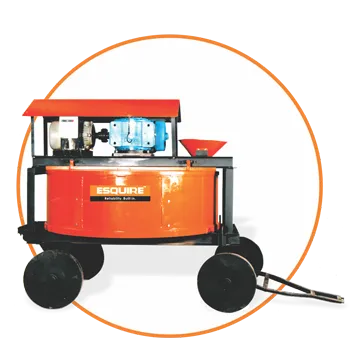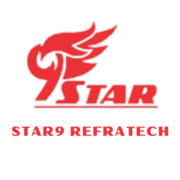Installation Of Castable Refractories
INSTALLATION OF CASTABLE REFRACTORIES.
- Castable Refractories are hydraulic setting materials.
- They must be installed under controlled conditions to ensure that the resultant concrete has a low permeability and dense structure.
- To obtain best results from theses castable, the following instructions must be followed.
Temperature
- In hot summer casting done at higher ambient temperature – temperature of the dry materials and the water to be added should be around 200C.
- During cold season portable clean up tap water is adequate.
- If the temperature is lower, the setting time is longer – just as a higher temperature accelerates setting time.
Anchoring
If anchoring is required, car must be taken to ensure that it is firmly welded position according to relevant specification proper coating of the anchor must be ensured prior to casting.
Forms
These should be water tight and strong enough to remain rigid and undistorted during casting. Forms must be tested in following manner before fixing to make it water tight and to achieve easy release after curing.
- Coat all the forms required for casting with suitable mould oil.
- For preventing absorption of water, make porous working surface impervious.
- All form works preferably made of MS with proper stiffeners.
Joints
Care must be taken to provide expand / construction joints as per design requirements.
Mixing
Proper mixing of castable refractories is very mush essential for getting optimum results utmost care is required for mixing of castable refractories.
Water
- Use only portable tap water and maintain the water temperature as mentioned in beginning.
- Use the specified quantity of water, Excess water would lead bleeding.
- Excess water also defoliates strength of castable.
- Lesser quaintly of water would affect bonding of castable.
- Make sure that mixer is first washed and cleaned.
- Castable refractories look very dry at the beginning but become fluid after mixing.
- To determine the optimal quantity of water the best way is to vibrate the contents using a small improvised mould or alternatively a bell in a hand.
Mixer

Use pan type of mixer. Concrete mixer is not suitable. The speed of mixer may according to type of constables. Generally, mixer with 28 to 36 rpm is suitable for mixing the castables.
Consistency
- Consistency could be checked to arrive at the correct moisture and flow ability.
The method is given below:
Make a 3 ” ball of mix in the hand and shake horizontally. if the mix is right it appears like an oily looking ball, if too dry, it crumbles; and if too wait, it flatness and tend to flow out.
Placing
- Castable are high performance product. Their placement must be effected with the use of high frequency vibrator of a diameter 1- 7/8” 2 ½” (or approximately 40 mm) working at around 14,000 VPM should be used.
- Move the vibrator slowly through the mix, withdrawing gently to prevent voids.
- Add batches of materials progressively, using vibrations until design thickness is achieved.
- Placing of each batch should be done successively within 15 to 20 minutes and care should be taken not to return excess material to the mix.
- The appearance of plain and shining surface indicates good densification.
- Also check the specific density from the ratio of quantity placed and the volume of the hardware in which it placed.
- Castables are recommended for placement by vibration not by hand due to the inherent thixotropic nature of the material.
Finishing
Trowel the surface only enough to make it level; avoid excessive trowelling of the surface. The castable surface should never be towelled to slick finish.
Removal of Forms
Ensure that refractory castable is thoroughly set before removing forms. The work should then be coverd with polyethylene sheets or by damped gunny bags / cloths.
Curing and Drying
Castables must be prevented from drying for at least 24 hours after the intial set. Covering with polyethylene sheet best carries this out. Strength will continue to improve. On completion of curing, air dry for at least 24 hours, allowing free air circulation over the whole installation.
Initial Heat up
Theses Castables can be heated at rates simillar to standard castables. The resultant concrete has a dens structure and care must be exercised during the initial heating. Listed below are specific recommendations of heating rates for various thickness.
- For lining less than 12”thick
- Raise temperature to 1100 C, at 250 C per hour
- Hold for 6 hours or until steaming ceases, whichever is longer.
- Raise tempeature to 600ο C per hour and hold for 12 hours.
- Raise to 1000ο C at not more than 250ο C per hour.

